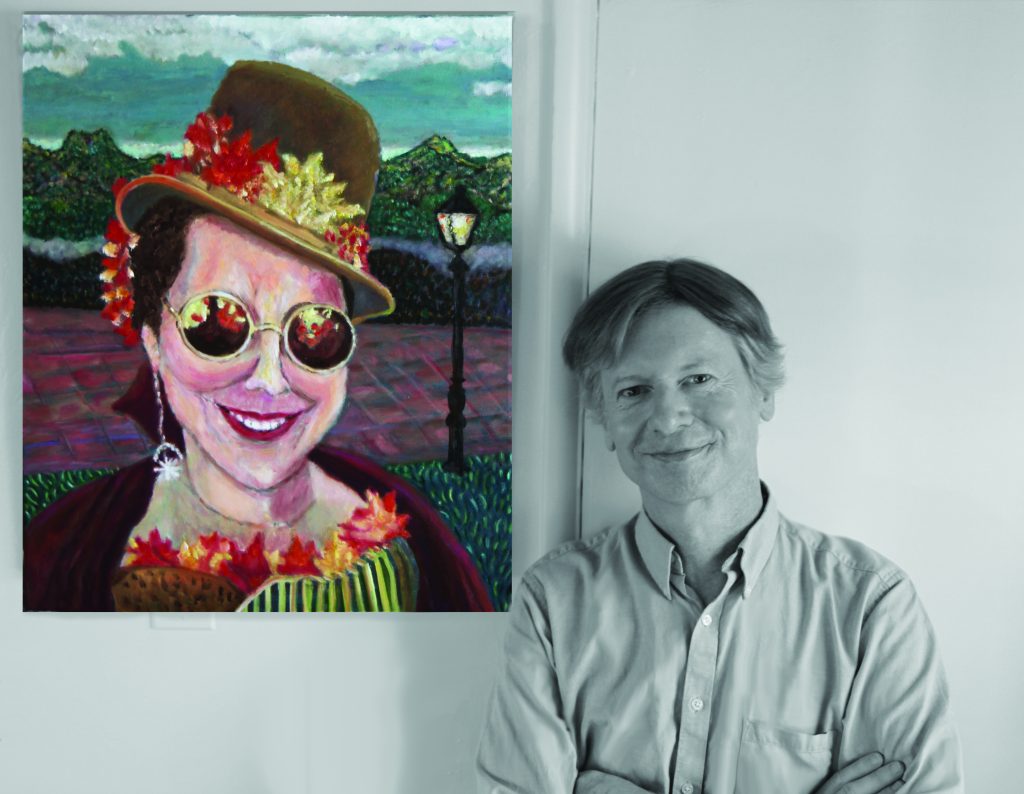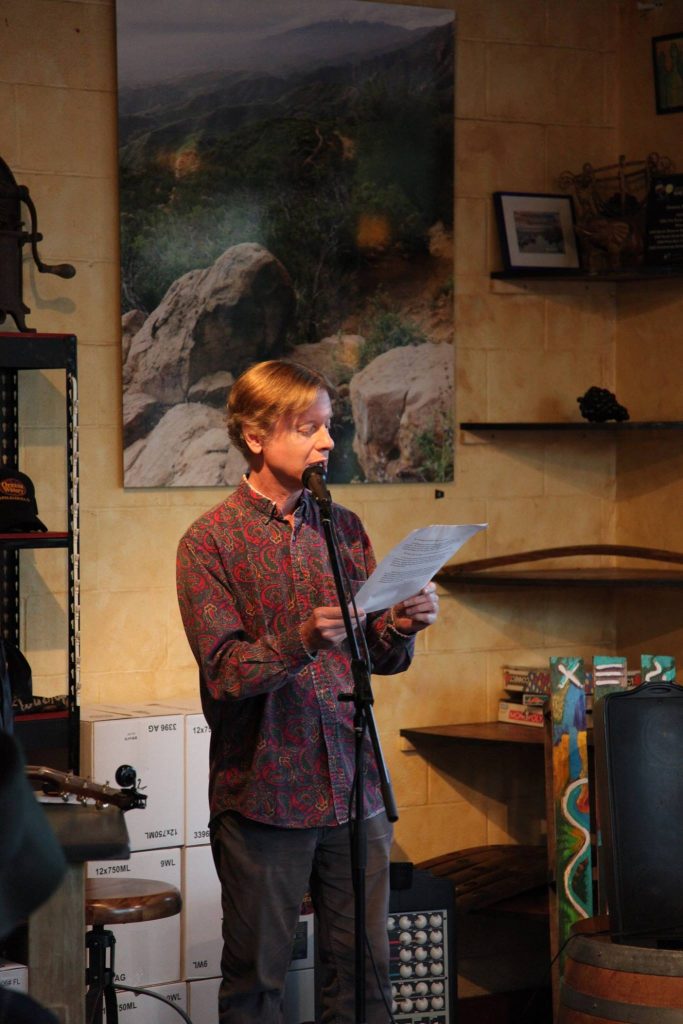I recently had the pleasure of interviewing writer and artist, Max Talley, whose writing has appeared in Fiction Southeast, Atticus Review, Vol.1 Brooklyn, Entropy, Bridge Eight, Santa Fe Literary Review, and Litro. His novel, Yesterday We Forget Tomorrow, was published in 2014 and his curated anthology, Delirium Corridor, debuted in December 2020. He has served as a contributing editor to Gold Man Review and Luna Review, and as associate editor for Santa Barbara Literary Journal. I hope you enjoy our conversation.
—
CM: To start, congratulations on winning the 56th Jerry Jazz Musician New Short Fiction Award back in March! That’s pretty wonderful. What can you tell us about your winning submission?
MT: I wrote about three of the most famous legends in jazz music meeting for a secret recording session in 1966. All three did know each other and had played together at some point in their careers. I wanted it to be realistic, to seem possible. It is told in sections from each musician’s point of view. I stumbled upon Jerry Jazz Musician, a journal about music, the 1960s, and the counterculture, and fell in love. I decided to write a story specifically for them. Usually that’s a mistake. If they hadn’t liked my piece, it may not have fit anywhere else. Yes, I was stunned to win. And though I write only for the suffering it causes me, I did accept their monetary prize.
CM: That was difficult, I’m sure.
I had a chance to read Delirium Corridor not too long ago. Great job curating such a strong and haunting collection of dark fiction. I’d love to hear what first inspired the idea for the book.
MT: I submitted a collection of just my own weird short stories to a few publishers in 2018. It either got negative responses or no response. In the fall of 2019, I thought it would be fun to try an anthology, or in musical terms, a band project instead of my David Lee Roth solo album. Silver Webb of Borda Books had done the Hurricanes and Swan Songs anthology that spring, so when I mentioned my idea casually over drinks, she seized on it immediately.
CM: I really appreciated the variety of stories and the questions they evoked — questions about survival, empathy, memory, friendship, grief, progress, and regret. What impact did the stories have on you and why?
MT: I just wanted strong stories that were haunting and held together in a mysterious way. If a story gave me a certain feeling of unease, then I suspected it was right for the collection. Some pieces live or die on the writing, the style, and with others, it’s more a general sense. This is a tough question. I had an iron conviction regarding what worked and what didn’t work, at the same time, that conviction is subjective. Someone else would have selected different stories.
CM: You contributed two stories to Delirium Corridor, the first and the last. I enjoyed both. Your imagination and style are impressive. I’ll never look at employment agencies or the circus in the same way again. What were the ideas and themes you were exploring in those pieces?
MT: Thank you. Both stories involve identity. Jeremy Rebus in “Delirium Corridor” is not certain who he is. Because of bizarre occurrences in his personal life and at his dull employment agency, he is prompted to find answers. Maybe the moral is, be satisfied with not knowing everything. Finding out the truth can be shattering, an altering experience. I first wrote “Man With the Acid Handshake” thirteen years ago and refurbished it for the collection. It was accepted for the Freakshow anthology, which sadly got canceled. I rarely wrote short stories back then, so I took a kitchen sink approach. A couple’s relationship drama and a satire on the publishing industry, but also about circus sideshows, the psychedelic experience, and people telling their stories in a bar. Anyway, main character Sean (like Jeremy) is searching for who he is, where he fits in? Existential questions. Clarity is overrated. That’s my message.
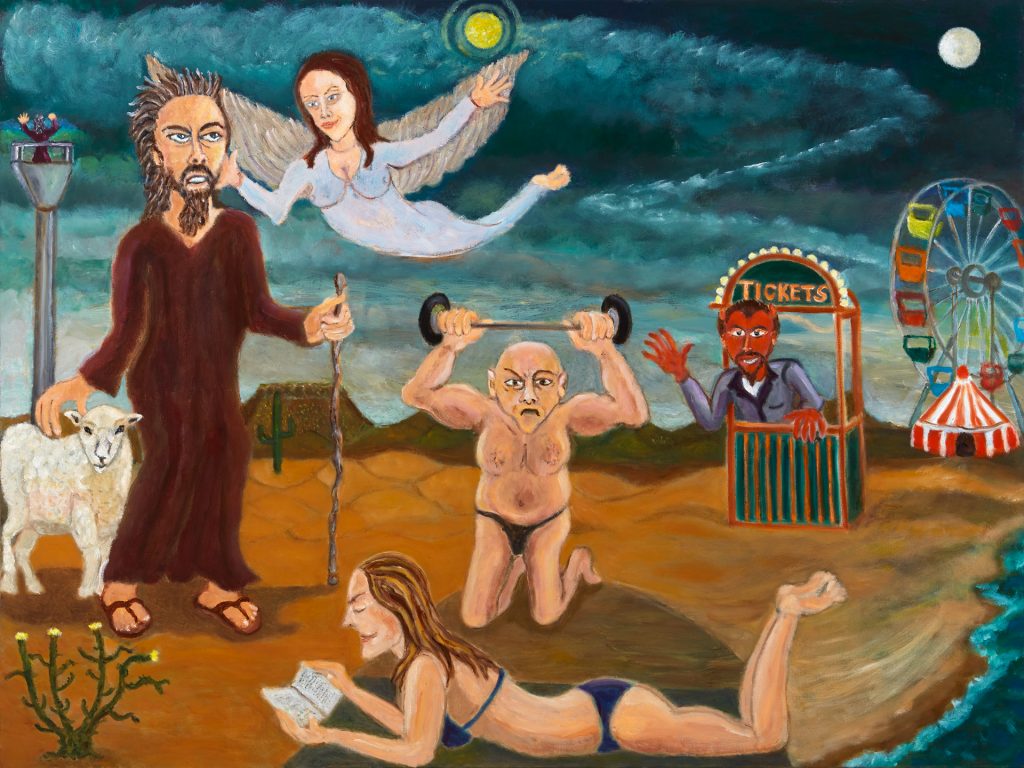
CM: Who and what first interested you in the sinister and surreal?
MT: I went to camp at ten and eleven, and read Alfred Hitchcock Presents anthologies of the best crime/suspense/horror writers. At the same time, I loved Ray Bradbury collections like The Illustrated Man and October Country. After that, watching reruns of The Twilight Zone and The Outer Limits on TV. As far as the surreal, my Mom took me to museums when I was five or six. So I related to Salvador Dali and Rene Magritte’s art long before I knew their names.
CM: I know that both of your parents were involved in writing and publishing. How would you say their passions and work inspired your own literary path, if at all?
MT: My parents were very strict. Had to stay in my room as a kid and TV was rarely allowed. I saw my Mom studying financial reports while my editor Dad was always reading manuscripts and books. So I read comic books, magazines, and books whenever possible. My mother could switch careers with ease and eventually wrote books too, so she inspired me to have a wider focus. Be adaptable. My father was solely focused on publishing. His influence may have been his sense of humor and a steely determination to make his books look their best. I remember accompanying him to the Art Director’s office at Penguin Books when he wanted revisions in a certain cover. I saw the man flinch, his face pained, and learned later that you were not supposed to do that. The Art Director was king of his domain. I did have a similar feeling/obsession with Delirium Corridor, where I wanted it to be as great as possible.
CM: You’re also a visual artist and a number of your paintings are featured in Delirium Corridor. Which came first in this case, the stories or the paintings? What kinds of stories are you trying to tell with your art?
MT: The “Acid Handshake” cover painting was done specifically for the story, even though it isn’t literal. The image shows the ringmaster extending his special hand, not Caldous the sideshow freak. Possibly also a tribute to Something Wicked This Way Comes by Ray Bradbury. A fantastical circus novel that blew my mind as a kid. I painted the back cover last summer to go with the titular story. Other paintings inside the anthology were not story-inspired. They just fit in certain places. I didn’t want to impose my own art except where it felt right. As far as stories in my paintings, some feel like dream fragments or a single scene in a story. A party where no one looks particularly joyous, or a dinner where nobody is eating. Most have little to do with my fiction writing, but it is fun when one art form can inspire or illuminate another.
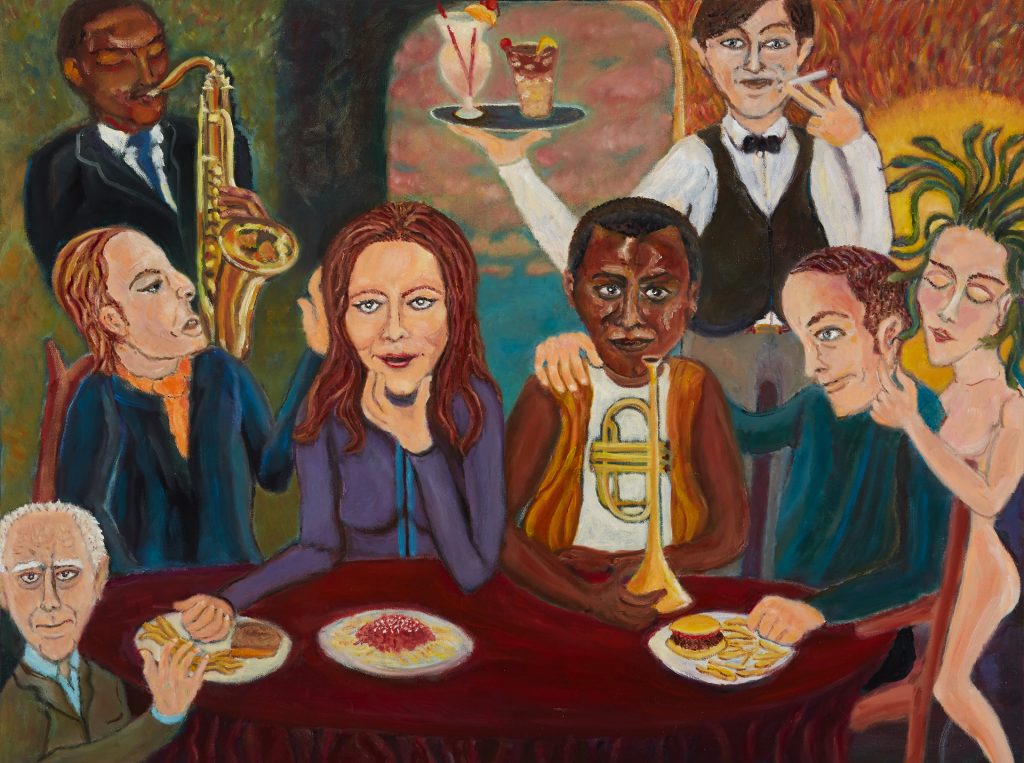
CM: How did you go about gathering the other art for the book? What were you looking for and what can you share about the other featured artists?
MT: I was seeking some link between art and story, whether logical or instinctual. I’m never entirely sure what I’m looking for until I see it. I’ve known Stephen Vessels since 2006, as an imaginative writer and an eccentric character, but I learned of his art from Facebook posts and his New York gallery show in 2017. He was very generous to allow use of eight of his images. Vessels’ own collection, The Mountain & The Vortex, influenced me in how to match art with stories. From the moment I saw Grace Rachow’s “The Flood” four years ago, I knew I’d want to use that bizarre doll image somewhere. Grace is the Director of the Santa Barbara Writers Conference, so have I mentioned she is the finest human being to ever walk the planet? Silver Webb took or tracked down a few perfect photographs, and John Reed directed us to an image by an artist known as Vergvoktre that came as close to depicting his “The Mole Train” as inhumanly possible.
CM: What would you like to share about the other writers in Delirium Corridor?
MT: If the collection succeeds, it is because of the writers’ contributions. Jesse Krenzel deserves more exposure. He has been consistently good for years. We accepted a flash fiction from Zane Andrea and then needed more pages, so I requested another story and she knocked it out of the ballpark with “Rainy Season.” Fred Williams hasn’t been writing long, but he is a natural storyteller with a lot of promise. I only met Sacha Wamsteker in 2019, but “Offline” fit right in. I knew Trey Dowell, Milda De Voe, Stephen Vessels, and John Reed would deliver because they’re heavyweights. Probably most surprised by Silver Webb. I told her I would reject vampire or werewolf stories, even if that rejection served as an iceberg to my Titanic, but I thought “Oh Yes, Dr. No” was pitch-perfect. I’m proud to showcase all these writers’ work, and if nothing else, maybe the anthology can serve as a sample platter to lead readers to more fiction by individual authors they enjoy.
CM: You mentioned the Santa Barbara Writers Conference and I know that you were acquainted with several of the writers featured in Delirium Corridor through that event. Can you talk a little bit about what you see as the value of attending conferences, for craft, collaboration, and community?
MT: Yes, John Reed and Shelly Lowenkopf taught at the Writers Conference and many DC contributors have attended. Conferences introduce you to fellow obsessives. Writer friends will raise your spirits during inevitable downturns in your creativity, and will puncture your ego balloon if you start to take yourself too seriously. Once you mature enough to not be so damn competitive, having a virtual round table of writer accomplices works out for everyone. We want others to enjoy our success, but we must revel in their successes too. Even if our lizard brain gets jealous,”I deserved to be in that magazine!” that will pass, and higher brain functions kick in. Life is short. Everyone deserves their moments of glory. Especially your friends.
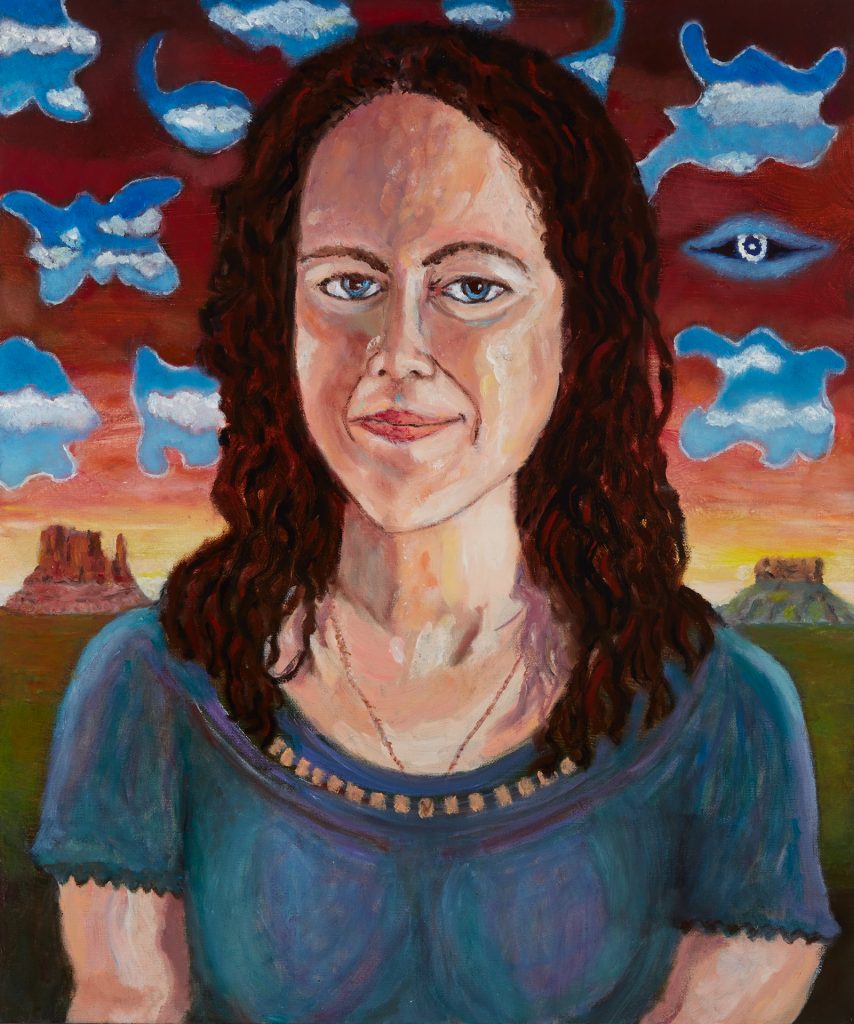
CM: What can you tell us about the experience of working with your publisher, Borda Books, and your editor and co-contributor, Silver Webb?
MT: Delirium Corridor would not have happened without Silver Webb. She has reinvigorated the local writing scene in less than three years. Ms. Webb was there every step of the way, remaining calm while I was panicking. She had been through the rigmarole with Santa Barbara Literary Journal and a previous Borda Books anthology. Besides listening to my crazed design ideas and crafting them into actual workable designs, she also co-edited the stories. There were writers she had edited before, so she was eminently suited to work with them again. I was very demanding on how I wanted the book to look, and she had every right to strangle me on a couple of occasions, like when I suddenly decided the cover art needed framing around it, or the nightmarish month I chose to experiment with different styles of space breaks. The horror…
The agony of formatting will haunt us far longer than the stories.
CM: Oh, I hear you. Looking back at it, was there a point at which you began to appreciate at some deeper level that curating and creating a book is a lot more involved than it looks?
MT: The curating part, finding the material, is the really fun part. Even editing stories isn’t so bad. That fools you into thinking you’re in for an easy ride. Once you’ve suffered the shame, the embarrassment of the first print proofs, you either run for the hills screaming or buckle down for the long haul. Formatting and proofreading over and over are hell. The devil is in the details.
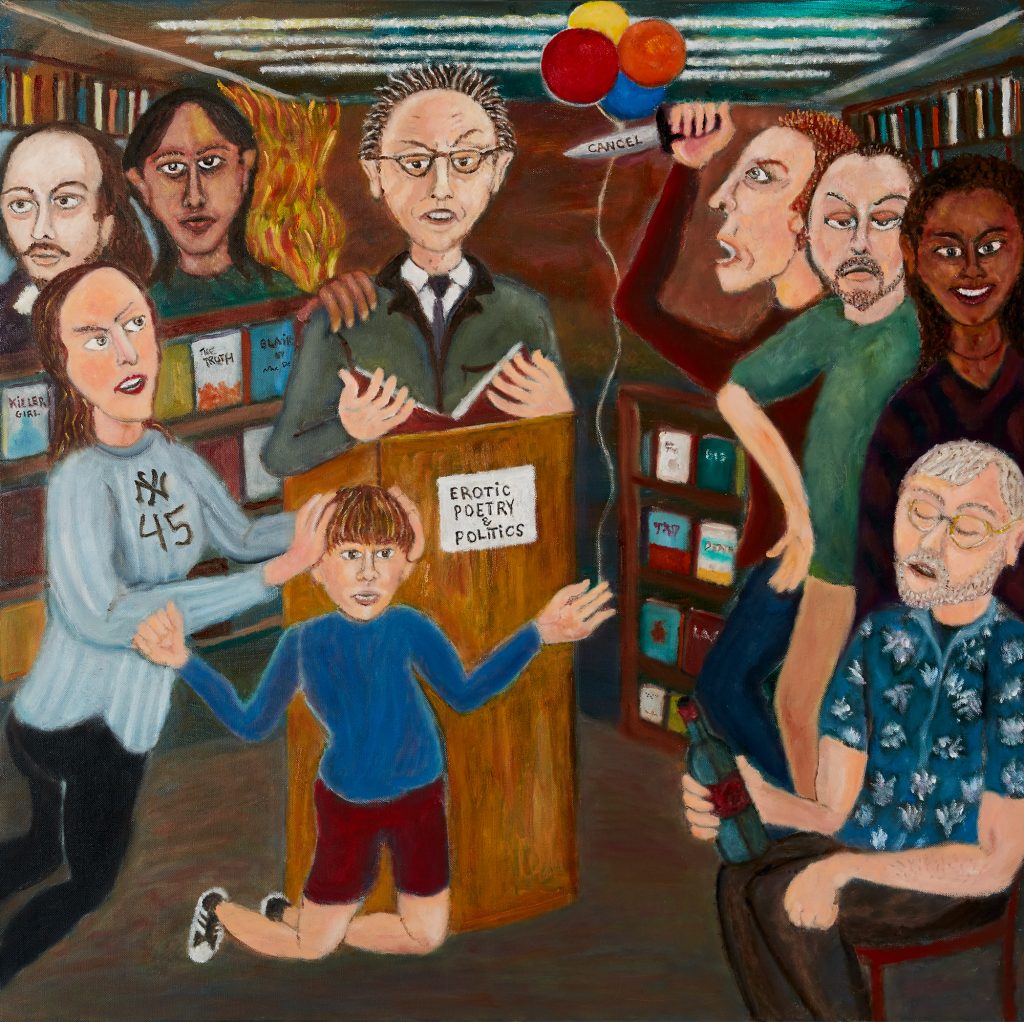
CM: I read that Ms. Webb kept reminding you of your desire to publish a collection of dark fiction. How important do you believe it is for a writer to have that voice of accountability and encouragement?
MT: Some writers need a gun pointed at their head to write, while others might need a stick with a dangling cocktail and a grilled cheese sandwich to lead them forward. Having friends to encourage you or who you can encourage is extremely important. The romantic image of the isolated writer in a mountain cabin pounding out their masterpiece is not romantic at all. Just cold and lonely. Writing is collaborative. You can rant all you want to about your unique genius, but friends in writing groups, workshop leaders, and sympathetic editors help improve your writing. So does reading books by great writers. Just admit it. You’ll feel better.
CM: There is a thread of wit woven throughout many of the stories in Delirium Corridor, and much of your writing, generally. How useful is humor as a writing device, particularly when one is writing darker fiction? How important is humor to you in your own writing?
MT: Humor in dark fiction often serves as a pause or a space break. You build up tension then give people a chance to breathe. Sometimes humor comes just before something horrific occurs. It is important to use with precision though. Too many jokes and no reader will take the story seriously. At a certain point it becomes satirical, and beyond that, a farce. There is more humor (or attempts at it) in the final story [in Delirium Corridor] because I figured if people read that far, they wouldn’t throw the anthology out the window in disgust. “I bought this book to feel tense and miserable, not to laugh!” Overall, humor is very important, in writing, and in my life.
CM: In your story, “Man With the Acid Handshake,” the character of Caldous says, “Everyone’s eventual future is the same…” It got me thinking about why, knowing that, many of us still feel compelled to create. Why do you think that is? What compels you to create?
MT: It’s different for art, so I’ll answer on writing. We all have read and been inspired by incredible books and want to pass on that inspiration. Storytelling is an ancient ritual, maybe one of the oldest. We know—deep inside—it has immense value. Not monetary. If you’re geared toward telling a story, it’s just essential. When odd ideas are swirling in your brain, probably best to put them down on paper. You won’t necessarily profit off them, but you won’t lose a fortune to a lifetime of therapy.
CM: As you mentioned, author and artist Stephen T. Vessels contributed some beautiful abstract pieces to Delirium Corridor, as well as a story titled “White Page,” in which his character, Robert, asks, “What is a blank page really? What is it saying before anything is written out?” What would you say to other writers out there who might feel fearful of the blank page?
MT: Don’t fear them. We all get creative blocks. If you can’t start a story on your computer or typewriter, take a pen and notebook to the park and just write without thinking. If that doesn’t work, draw sketches to break scenes down—like some movies do. If you get stuck in the genre you are comfortable in, switch genres. Long walks and hikes are excellent for sorting through ideas and even finishing stories you might be stuck on. Do not jog or run while plotting stories. You will trip and fall, and it will hurt. Not that I know a single solitary thing about that.
CM: Yeah, I definitely don’t know a thing about that, either.
You’ve been published in too many places to list here. What has that process of consistently writing and publishing taught you about yourself as a writer?
MT: If you have chosen the arts (writing, painting, music, acting), be prepared for many rejections, and when you succeed, criticism. As a writer, you’re searching for the few editors who get what you’re doing. When I’m not working on a novel, I write a short story a month. Ernest Hemingway talked about having a bullshit detector. To be effective, it must be a two-way device. You have to be able to suss out what is your best work and what is merely satisfactory. Some writers either love anything they write, or loathe every word they’ve put on paper. Neither stance is helpful. Be realistic about your strengths and weaknesses. When you get rejections, figure out if the story/writing is flawed and needs further work, or if it’s the editor whose singular opinion is wrong and merely subjective. Persistence and endurance are essential.
CM: Where can people purchase a copy of Delirium Corridor?
MT: It is available on Amazon, at www.santabarbaraliteraryjournal.com, and in discerning bookstores in Santa Barbara and Santa Cruz, CA, and Sante Fe, NM. More brick-and-mortar locations will follow. World domination is our modest goal.
CM: How can people find you, your writing, and your art?
CM: What are you working on now?
MT: A novella about a hippie art gallery owner in 1969 San Francisco, who decides to help out against dealers selling poisoned drugs, the Mob, and the street crime that infested Haight-Ashbury in the years following the Summer of Love. He has to work secretly with the police, which is about a big a sell-out as you could be back then. So he will be a complicated, tortured protagonist, a Private Third Eye, if you will. It’s a thriller or crime fiction.
I’m also shopping a short story collection titled: My Secret Place. It is comprised of literary fiction that details the psychological landscapes of various complicated male and female characters. I’d like to believe it contains some of my strongest writing to date. Belief is very important in these uncertain times.
CM: You’re right about that. Is there anything else you’d like to share?
MT: It’s an honor to be interviewed by you, Chloé. I’ve read some of your previous work, including your feature on Stephen T. Vessels, and am thankful for someone like you, out there in the near distance, who appreciates and celebrates what other creative people are doing.
CM: It’s my pleasure. And thanks, by the way, for the insomnia. I don’t dare close my eyes for fear of mall dressing rooms, writhing vines, AI with an agenda, and Grandpa Harold. The writing in Delirium Corridor made me think, with all of the lights on and doors locked. It’s a wild and horrific ride. Congrats again. I wish you and all of your fellow contributors the best of luck with the book and beyond.
MT: Thank you.
—
To learn more about Max Talley, or to inquire about his art, please visit his website.
Delirium Corridor features stories by the following writers:
“Scavenger” by Jesse Krenzel
“Ruthless Efficiency” by Trey Dowell
“The Mole Train” by John R. Reed
“Comafornia®™” by Genna Rivieccio
“White Page” by Stephen T. Vessels
“Left Brain” by M. M. De Voe
“The Sliver” and “Rainy Season” by Zane Andrea
“City of Illumination” by Jack Eidt
“Visions of Art” by Shelly Lowenkopf
“Offline” by Sacha Wamsteker
“Opportunity Knocks” by Frederick T. Williams
“Oh Yes, Dr. No” by Silver Webb
“Delirium Corridor” and “Man with the Acid Handshake” by Max Talley
You can purchase a copy on Amazon.
PLEASE NOTE: The opinions, representations, and statements made in response to questions asked as part of this interview are strictly those of the interviewee and not of Chloé McFeters or Tortoise and Finch Productions, LLC as a whole.


